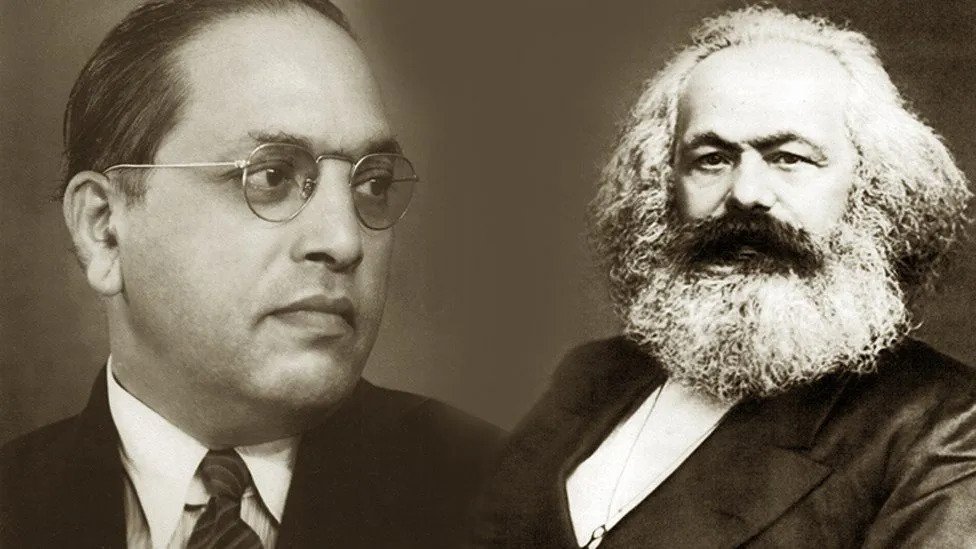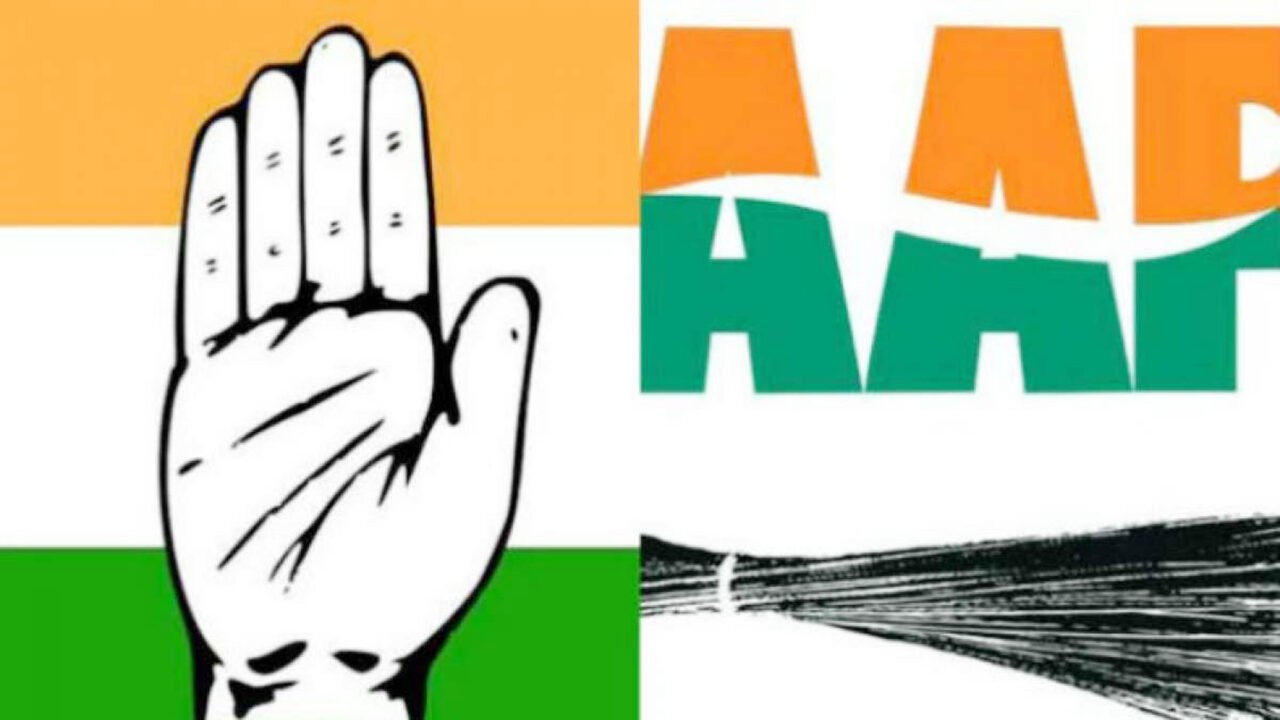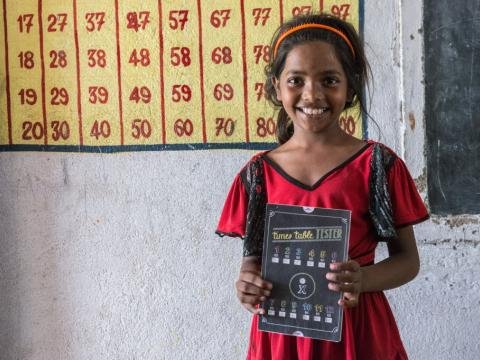By: Kavita Krishnan
To understand the true meaning of the ‘hijab issue’ playing out in Karnataka and other states, one only needs to pay close attention to the way in which it is being invoked in poll-bound states by Bharatiya Janata Party [BJP] leaders aiming to create and consolidate a Hindu vote-bank.
Union Minister and BJP leader Giriraj Singh said last week, “There are some vote ke saudagar (votes dealers) who for their political benefits are supporting such illogical demands of wearing Hijab in school. Such people are playing with the lives of innocent girls for votes. I feel Uniform Civil Code is need of the hour and it should be discussed from the streets to Parliament.”
With his characteristic audacity, Giriraj Singh attacked the hijab for votes, while accusing those defending Muslim women’s right to wear the hijab, of doing so for votes. Note, however, that his message places himself and his party on the side of public as opposed to political benefit; of logic as opposed to illogic; of “innocent girls” who are pawns of manipulative and guilty (Muslim) men; of a lofty “uniformity” rather than partisan and selfish interests; and even of democratic “discussion” as opposed to the Muslims’ stubborn and rigid refusal to be reasonable. This, then, is the political message the BJP is conveying, with the help of the dominant media across languages, on the subject of the hijab in particular, and Muslims in general.
Rather than rely on carefully phrased dog-whistles that dance around the Election Commission’s injunctions against religion-based propaganda and hate-speech, the BJP Member of Legislative Assembly [MLA] from Domariyaganj and the Uttar Pradesh in-charge of the Chief Minister Yogi Adityanath’s own private outfit the Hindu Yuva Vahini, Raghavendra Pratap Singh spelled things out quite explicitly. “If I become MLA again this time,” he said, “gol-topis (skull caps) will vanish, and the miyan log (a derogatory term for Muslims) will have to give up the skull-cap and wear the tilak instead; they will have to say “Jai Shri Ram” and not “salaam”.”
BJP Parliamentarian (also an accused in the Malegaon Hindu-supremacist bomb blast conspiracy case) Pragya Singh Thakur declared, “Those unsafe at home wear hijabs, but they are safe around Hindu Samaj (Hindu society), so they cannot wear them to schools and colleges, it will not be tolerated.” In this single sentence, she managed to deliver a threat to hijab-wearing Muslim women, insinuate that Muslim men are abusive to their daughters, perpetuate rape culture by implying that the headscarf or veil is needed for ‘safety’ from sexual violence, and declare that Muslim women must perforce be exposed to the ‘safe’ gaze of Hindu men.
Raghavendra Singh’s and Thakur’s words, and the actions of the Hindu-supremacist outfits in Karnataka, offer a preview of what the BJP’s version of “Uniform Civil Code” will be. “Uniformity” will mean the erasure of plurality, not gender justice, in plural and culturally specific civil codes.
When the Constitution adopted the goal of the ‘Uniform Civil Code’, the word ‘uniform’ in the Indian mind may have been innocent of the taint of Hindu-supremacy. But since the 1990s, ‘uniform civil code’ no longer just means a civil code that is ‘commonly’ accepted by and accessible to all citizens. The Rashtriya Swayamsevak Sangh [RSS] and BJP campaigns have ensured that ‘uniform’ now spells a violent erasure of the ‘particular’ and ‘specific’ cultures of minorities, especially Muslims. Muslims will have to be subject to the codes of “Hindu Samaj”, since Hindu-ness will no longer be treated as a specific faith, but instead as the nation itself.
The issue was never the hijab’s compatibility with school uniforms, or its association with patriarchal prescriptions of modesty – after all, Sikh turbans are worn with uniforms even in the police and armed forces, and the dupatta, pallu, ghoonghat, and sindoor, all have equally patriarchal associations. The reason for targeting the hijab was always to humiliate, harass, and isolate Muslims and, eventually, force them to assimilate to Hindu-ness – “wear tilak”, in other words.
It is already happening in Karnataka. In colleges where ‘Saraswati Puja’ (a ritual worship of the Hindu goddess of learning) has just been officially celebrated by the administration, Muslim students and teachers are being forced to strip off their headscarves or burqa (the loose outer garment) before they enter the campuses. Hindus can wear bindis, and pottu and tilak; Sikh men can wear turbans; Hindus, Christians, Sikhs alike can wear religious lockets, bracelets or threads: wearing symbols of their faith in the same spaces where Muslims cannot wear hijabs.
There is a criminal law analogy in the BJP spin on the Uniform Civil Code. Prime Minister Narendra Modi insists that it is an affront to Hindus to suggest that any Hindu could ever be a terrorist: he is implying that draconian terror laws like the Unlawful Activities (Prevention) Act [UAPA] or the sedition laws are not meant to apply to Hindus. When Hindus conspire to instigate or organise the massacre of Muslims, as Thakur is accused of doing, they can not only evade being charged under such laws: they can even claim the mantle of patriotism. Instead, UAPA or the sedition law are now almost exclusively applied to Muslims who are a religious minority, or to Left activists or intellectuals who are seen as an ideological enemy of the ‘Hindu nation’.
Just like terrorism is not terrorism when done for the Hindu-supremacist cause, desertion of your wife is not a crime when a Hindu man does it. It is a punishable crime only when a Muslim man deserts his wife, by resorting to “instant triple talaq” – which is a legally untenable form of divorce. The BJP’s campaign for the ‘Uniform Civil Code’, like its campaign against the hijab, quite explicitly states that Muslims as a community embody separatism, patriarchy, violence against women, and medieval social regression, while Hindus, by definition, are ‘safe’, benignly ‘protective’, and progressive.
The hijab is today being stigmatised as a visible embodiment of the Indian Muslim’s wilful separatism. Similar practices like covering the head with a pallu or even covering the face with the ghoonghat, or the wearing of Hindu symbols like the kalava thread or the kada bracelet are “Indian culture’ – not to be compared with the ‘alien’ and ‘regressive’ hijab or burqa. Members of the Hindu Janjagran Samiti [HJS] can be seen these days on TV, defending the prohibition on wearing a hijab inside schools or colleges. The HJS website, and that of its sister organisation the Sanatan Sanstha, have posts full of pseudo-science explaining why covering one’s head with the pallu of one’s sari is beneficial for Hindu women, while wearing clothes like skirts or jeans or T-shirts is harmful! But these gents can publicly campaign against the Muslim headscarf as something intolerable. Remember, the young women in Udupi are not demanding that other women wear a hijab; they are merely wanting to study in peace while wearing their hijabs.
It would be a mistake to see this attack on the hijab as merely an election ploy, even though the BJP is also deploying it as such. It is part of the larger project of gradually putting in place and acclimatising Indians to a legal and governmental infrastructure suited to a Hindu-supremacist India. And every element of that infrastructure the BJP introduces, is in keeping with the RSS’s vision of a Hindu Nation. The campaign to erase the hijab is in keeping with the kind of forced assimilation RSS founding father Golwalkar wrote of in his book ‘We or Our Nationhood Defined’: “The foreign races in Hindusthan must either adopt the Hindu culture and language, must learn to respect and hold in reverence Hindu religion, must entertain no idea but those of the glorification of the Hindu race and culture, i.e., of the Hindu nation and must lose their separate existence to merge in the Hindu race, or may stay in the country, wholly subordinated to the Hindu Nation, claiming nothing, deserving no privileges, far less any preferential treatment not even citizen’s rights.”
Deen Dayal Upadhyay, another RSS leader whose bigotry is veiled by mumbo-jumbo about “integral humanism”, said much the same as Golwalkar. In an article titled Akhand Bharat (Undivided India) from 1953, Upadhyay wrote of the need to find a solution for what he called the ‘separatist and anti-national attitude of the Muslim community.’ He asked if the Indian National Congress party, that government much of India, want that “Muslims should be driven out of India”? If not, he said, Muslims “will have to be assimilated into the national life of this country”; in other words, Muslims must be “made Indian.” In the next breath, Upadhyay made it clear what this process of “making Muslims Indian” would require: “we must also change the 30-year old policy of Hindu Muslim unity, which Congress adopted on a wrong basis … If we want unity, we must display Indian nationalism which is Hindu nationalism, and Indian culture which is Hindu culture.”
For over a decade, Hindu-supremacist men have conducted a violent campaign to break apart those linked hands: bullying and forcibly separating Hindu and Muslim classmates, neighbours, friends and lovers. Those linked hands that survived this campaign keep hope alive and fighting. They remind me of another photograph: that of social reformers Fatima Sheikh and Savitribai Phule, who braved stones and shit flung at them to educate girls in 19th century Pune. In the only surviving photograph of them, both are wearing similar saris that look like teachers’ uniforms, with the pallu drawn over their heads – Savitri with a horizontal tilak on her forehead, Fatima with her forehead bare and a hint of a smile on her lips. Behind them, a Muslim woman in a hijab, and in front of them two little schoolgirls, one of whom has a bindi on her forehead.
Salaams to Fatima and Savitri and their daughters today who link hands to go study – in all their glorious unity against enforced uniformity. (IPA Service)







